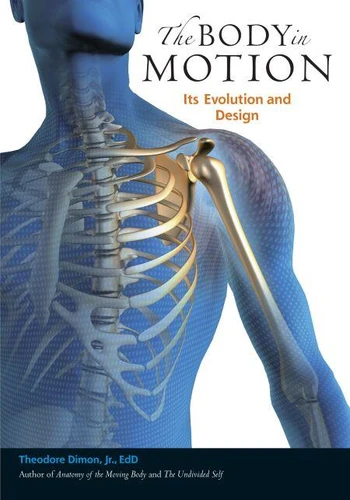The Body in Motion
Par :Formats :
Disponible dans votre compte client Decitre ou Furet du Nord dès validation de votre commande. Le format ePub protégé est :
- Compatible avec une lecture sur My Vivlio (smartphone, tablette, ordinateur)
- Compatible avec une lecture sur liseuses Vivlio
- Pour les liseuses autres que Vivlio, vous devez utiliser le logiciel Adobe Digital Edition. Non compatible avec la lecture sur les liseuses Kindle, Remarkable et Sony
- Non compatible avec un achat hors France métropolitaine
 , qui est-ce ?
, qui est-ce ?Notre partenaire de plateforme de lecture numérique où vous retrouverez l'ensemble de vos ebooks gratuitement
Pour en savoir plus sur nos ebooks, consultez notre aide en ligne ici
- Nombre de pages128
- FormatePub
- ISBN978-1-58394-691-6
- EAN9781583946916
- Date de parution13/11/2012
- Protection num.Adobe DRM
- Taille50 Mo
- Infos supplémentairesepub
- ÉditeurNorth Atlantic Books
Résumé
An anatomical exploration of the human body, accessibly written with 162 full-color illustrations for physical therapists, dancers, yoga teachers, and studentsThis comprehensive guide demonstrates the functions and evolution of specific body systems, explaining how they cooperate to form an upright, intelligent, tool-making marvel, capable of great technological and artistic achievement. Enhanced with 162 beautifully rendered full-color illustrations, the book opens with an introduction to the origins of movement and a journey through time and evolution-from fish to amphibian, quadruped to primate-showing how humans became the preeminent moving beings on the planet.
Further examining our upright support system, the book describes the purpose of: . The extensors, flexors, and spine. The importance of the shoulder girdle as a support structure for the arm . The hands and upper limbs. The pelvic girdle. The feet and lower limbs. Breathing. The larynx and throat musculature. The spiral musculature of the trunk It is our upright posture that makes it possible for us to move in an infinite variety of ways, to manipulate objects, to form speech, and to perform the complex rotational movements that underlie many of our most sophisticated skills.
These systems, Dimon argues persuasively, have helped us build, invent, create art, explore the world, and imbue life with a contemplative, spiritual dimension that would otherwise not exist.
Further examining our upright support system, the book describes the purpose of: . The extensors, flexors, and spine. The importance of the shoulder girdle as a support structure for the arm . The hands and upper limbs. The pelvic girdle. The feet and lower limbs. Breathing. The larynx and throat musculature. The spiral musculature of the trunk It is our upright posture that makes it possible for us to move in an infinite variety of ways, to manipulate objects, to form speech, and to perform the complex rotational movements that underlie many of our most sophisticated skills.
These systems, Dimon argues persuasively, have helped us build, invent, create art, explore the world, and imbue life with a contemplative, spiritual dimension that would otherwise not exist.
An anatomical exploration of the human body, accessibly written with 162 full-color illustrations for physical therapists, dancers, yoga teachers, and studentsThis comprehensive guide demonstrates the functions and evolution of specific body systems, explaining how they cooperate to form an upright, intelligent, tool-making marvel, capable of great technological and artistic achievement. Enhanced with 162 beautifully rendered full-color illustrations, the book opens with an introduction to the origins of movement and a journey through time and evolution-from fish to amphibian, quadruped to primate-showing how humans became the preeminent moving beings on the planet.
Further examining our upright support system, the book describes the purpose of: . The extensors, flexors, and spine. The importance of the shoulder girdle as a support structure for the arm . The hands and upper limbs. The pelvic girdle. The feet and lower limbs. Breathing. The larynx and throat musculature. The spiral musculature of the trunk It is our upright posture that makes it possible for us to move in an infinite variety of ways, to manipulate objects, to form speech, and to perform the complex rotational movements that underlie many of our most sophisticated skills.
These systems, Dimon argues persuasively, have helped us build, invent, create art, explore the world, and imbue life with a contemplative, spiritual dimension that would otherwise not exist.
Further examining our upright support system, the book describes the purpose of: . The extensors, flexors, and spine. The importance of the shoulder girdle as a support structure for the arm . The hands and upper limbs. The pelvic girdle. The feet and lower limbs. Breathing. The larynx and throat musculature. The spiral musculature of the trunk It is our upright posture that makes it possible for us to move in an infinite variety of ways, to manipulate objects, to form speech, and to perform the complex rotational movements that underlie many of our most sophisticated skills.
These systems, Dimon argues persuasively, have helped us build, invent, create art, explore the world, and imbue life with a contemplative, spiritual dimension that would otherwise not exist.



